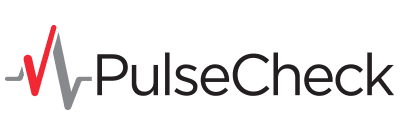As anyone working in the medical field can tell you, excellent patient care begins with the patients themselves in mind. This ideology is enabled by building a practice infrastructure that allows your team to dedicate more time to spend with patients. Manual administrative tasks, such as paperwork, bookkeeping, insurance verification, patient intake, etc. can all quickly consume bandwidth during business hours and reduce the amount of time spent directly with patients.
One way that you can streamline your operations is by implementing an electronic health record system in your organization. These software solutions provide a single touchpoint for managing all critical aspects of patient data, creating more time for your team to care for patients and reduce their time waiting for treatment. Today, we’ll be discussing the top 5 ways that EHR systems can improve patient care.
Store All Records in a Single, Secure Environment
Electronic health record systems provide one single storage destination for all important documents within your practice. This can help your organization reduce any clutter or confusion that comes with physical files being kept in different locations across the office. EHR systems store your records in digital form, making them clearly readable and leaving no room for misinterpretations that come from handwritten notes.
These systems also allow your staff to transfer files from any internet-enabled device such as a computer, tablet, or smartphone. In addition, you don’t have to worry about your patient’s security when using an EHR system. These systems are secure and fully HIPAA compliant to protect sensitive information.
Share and Receive Records with Patient and Other Providers
Electronic health record systems make it easy for patients to access their records from their visits to your practice. Patient information can easily be shared with other care providers that treat them such as primary care doctors, specialists, labs, and surgeons. This creates greater continuity following the patient’s full treatment journey and leaves little room for errors and miscommunication between practices.
Faster Transmission of Information
EHR systems can be used to store all relevant documents, from administrative paperwork to medical information, with quick transmission. This can help your practice efficiently manage and send documents such as insurance and billing records, intake forms, and discharge documentation. Patient files can be retrieved easily with intuitive search features to find what you are looking for more quickly and efficiently.
Many electronic health record systems can also convert charts into PDFs to send to other necessary contacts through HIPAA-approved digital transmission methods. This is typically a much faster process than printing and scanning records manually and can save your practice time and labor.
Easy and Simple to Use
Difficult and non-intuitive EHR solutions can become just as time-consuming to learn as managing physical records. If you and your staff are spending hours and committing errors trying to learn the ins and outs of a new EHR system, this defeats the purpose of using a new software solution to improve operations in the first place.
Your practice should make sure to look for an EHR system that does not require advanced technical knowledge to operate. A simple system can be quickly learned and mastered by your front desk staff, nurses, and doctors alike to interact and communicate.
Includes Other Patient-Centered Features
Many electronic health record systems include additional features that aim to make the patient’s process of visiting the doctor smooth and easy. Electronic prescribing is one feature that is typically included in EHR systems and makes it easy for your staff to quickly and reliably send a patient’s prescription info to a pharmacy of their choice. This also reduces the need for patients to handle physical prescriptions.
EHR systems also offer telehealth features like text-based, video, and audio communication. Additionally, patients are often able to use app-based check-in for urgent care visits, letting them avoid sitting in the waiting room for lengthy periods of time. These features are important for increasing your practice’s levels of patient satisfaction along with staying current in the modern age of digital tools in the medical world.
Streamline Your Emergency Department Operations with PulseCheck
PulseCheck is the innovative developer of patient and practice-centered software solutions to streamline processes and operations within your organization. Built by Canadians for Canadian Hospitals, PulseCheck ED can help enhance your clinical and administrative workflows as well as accommodate eCTAS, PIA times, and compliance with provincial healthcare standards.
To learn more, check out our Emergency Department solution features here or request a demo.
